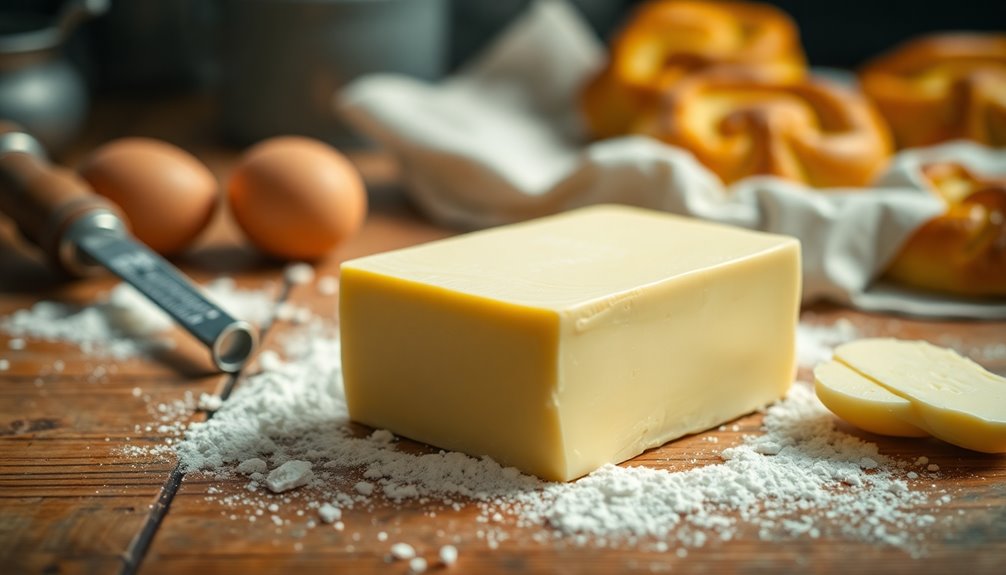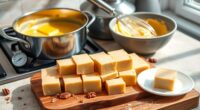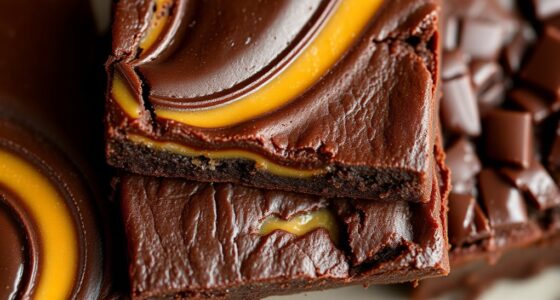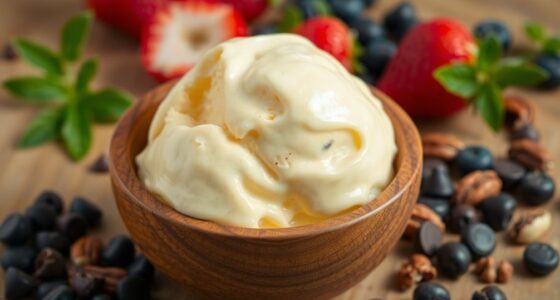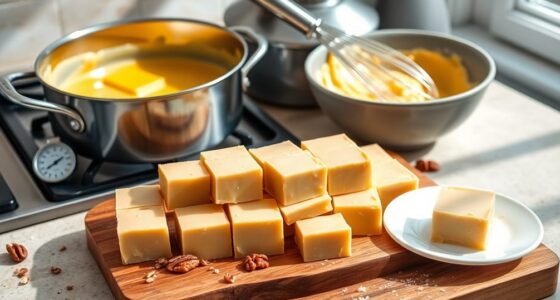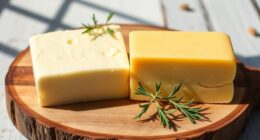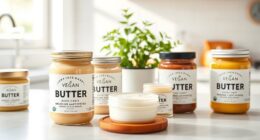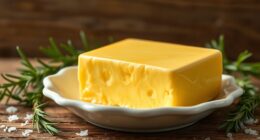When you bake, using real butter instead of margarine is key for the best flavor and texture in your treats. Butter's rich dairy content enhances complexity, giving cookies a firmer, crispier bite that margarine's greasiness can't match. With a perfect melting point, butter creates that ideal chewiness and golden-brown finish. If you want to discover delicious recipes that highlight butter's brilliance, keep exploring the sweet world of baking.
Key Takeaways
- Real butter enhances the depth of flavor in baked goods, providing a richness that margarine cannot match.
- The lower melting point of butter contributes to a firmer, crispier texture in cookies compared to the softer, cakier results from margarine.
- Butter's milk solids create a creamy mouthfeel, while margarine's higher water content can result in a greasy texture.
- Baking with butter yields a golden-brown color and prevents excessive spreading, leading to a more visually appealing treat.
- Substituting margarine for butter may compromise both flavor and texture, making real butter the preferred choice for sweet treats.
The Flavorful Advantage of Butter
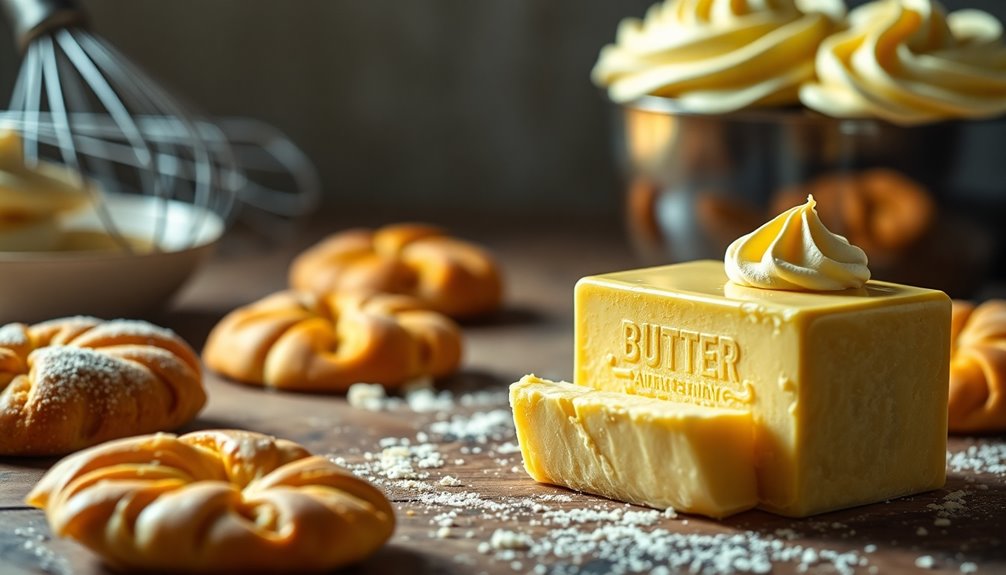
When you choose butter for your baking, you're not just opting for fat; you're enhancing the flavor of your treats.
Butter's rich, dairy content brings a depth of flavor that margarine simply can't match. While margarine often delivers a flat profile, real butter adds a complexity that elevates your cookies and cakes.
Its high-fat content helps achieve a firmer texture, creating that desirable chewy bite, while preventing excessive spreading. You'll also notice that butter's lower melting point allows for even spreading during baking, resulting in crisper edges. Additionally, continuous butter making ensures a consistent quality that maintains the rich flavor profile essential for baking.
Texture Matters: Butter vs. Margarine
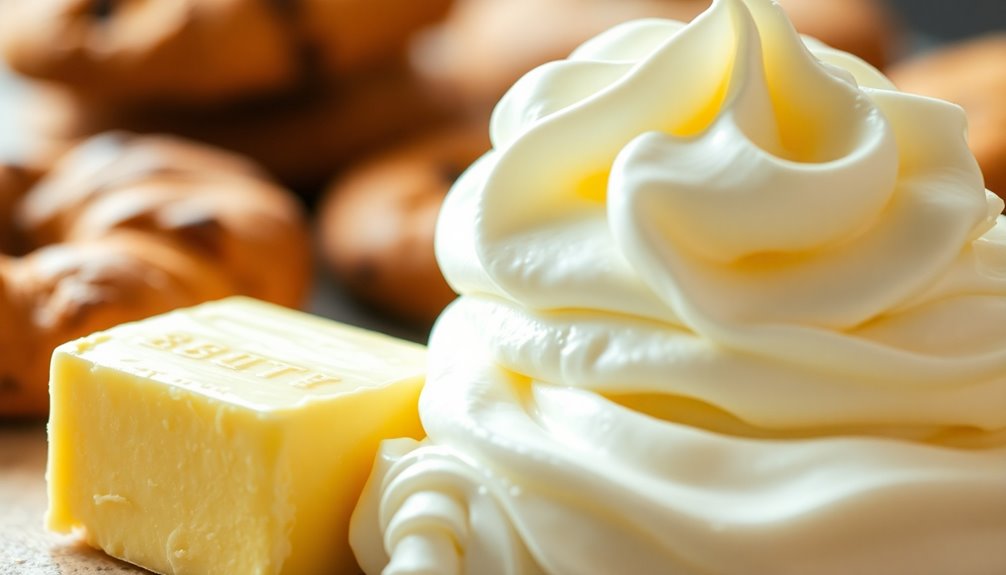
Choosing butter isn't just about flavor; it greatly impacts the texture of your baked goods. When you always use butter, cookies spread more during baking, resulting in a firmer, crispier texture.
In contrast, using margarine, especially the tub variety with higher water content, leads to softer, cakier treats that lack that desirable crunch. Butter's lower melting point allows for that perfect chewiness, enhancing the overall experience.
Baked goods made with butter consistently shine in texture and flavor, while those made with margarine can sometimes feel greasy. If you want cookies that deliver on both taste and texture, make it a point to always choose butter over margarine for your baking adventures. Additionally, butter adds flavor and moisture to baked goods, making it an essential ingredient in any recipe.
Trust me; your taste buds will thank you!
Baking Chemistry: Melting Points and Mouthfeel
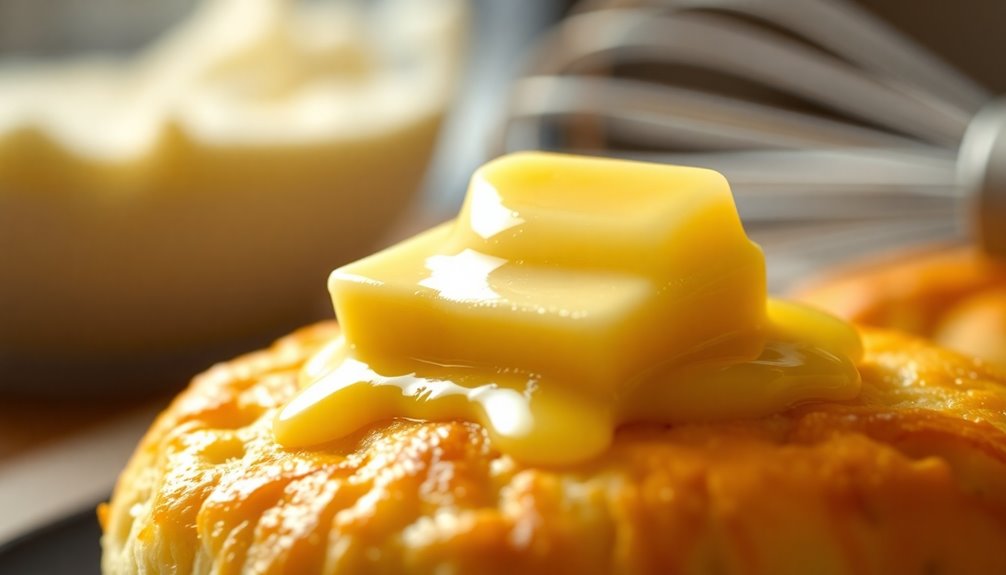
Understanding the baking chemistry behind melting points and mouthfeel can elevate your baking game.
Butter has a lower melting point (around 90-95°F) compared to margarine (approximately 98-100°F). This difference means cookies made with butter spread more, resulting in a thinner, crispier texture.
Butter's fat content and the presence of milk solids contribute to its rich, creamy mouthfeel, enhancing flavor and creating that coveted golden-brown color.
In contrast, margarine's higher water content (15-20%) often yields a cakier texture and a greasier mouthfeel, diminishing the overall experience.
Plus, the higher melting point of margarine can lead to less evaporation, making your baked goods softer and more cake-like instead of the delightful crispness butter provides. Additionally, using unsalted sweet cream butter allows for precise flavor control in baking, ensuring optimal results.
Substitutions: When to Use Margarine
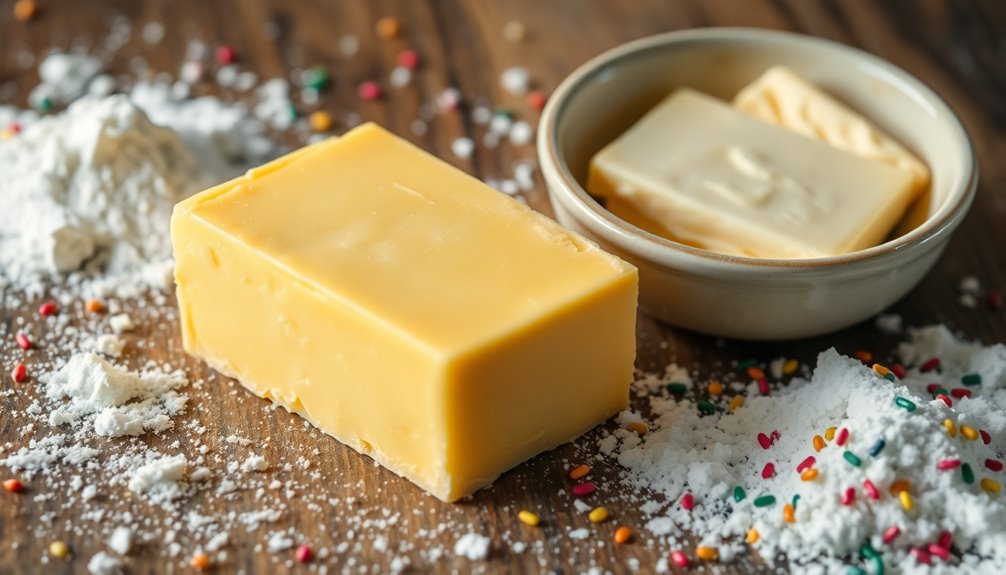
Have you ever wondered when it's appropriate to swap margarine for butter in your baking? You can substitute margarine for butter at a 1:1 ratio, but be aware it may change the flavor and texture of your baked goods.
Stick margarine is the better choice since tub margarine has a higher water content, which can lead to inconsistent results. If a cookie recipe calls for softened butter, using margarine might make the dough softer or cakey.
To strike a balance, try using half margarine and half butter; this way, you can accommodate dietary needs while enhancing flavor and texture. Additionally, understanding the differences between salted and unsalted butter can further impact your baking results. If you're looking for alternatives, consider vegan butter or oils like coconut or olive oil for different outcomes.
Delicious Recipes to Showcase Butter's Brilliance
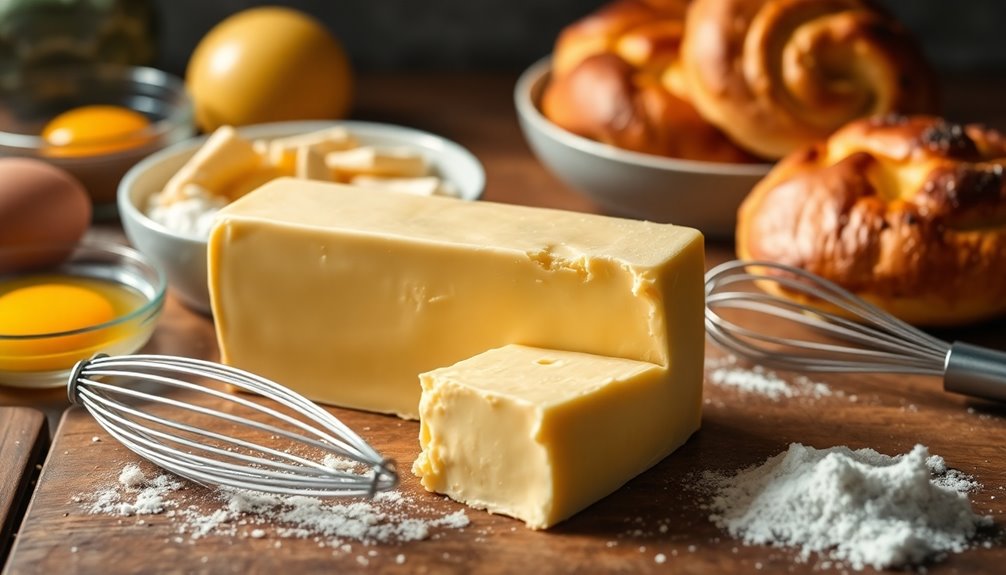
While margarine can serve as a suitable alternative in some baking scenarios, nothing truly compares to the rich flavor and texture that real butter brings to the table.
To showcase butter's brilliance, try these delicious recipes:
- Chocolate Chip Pecan Cookies – Real butter enhances the nutty and sweet flavors, making these cookies exceptionally delightful.
- Brown Sugar Chocolate Chip Cookies – The butter creates a firmer texture with crispy edges, elevating your cookie game to new heights.
- Browned Butter Chocolate Chip Cookies – Browning the butter adds a unique nutty flavor, resulting in the perfect cookies that stand out.
In addition, using grass-fed butter can further enhance the health benefits and flavor in your baked goods.
With these recipes, you'll experience the magic of real butter in every bite!
Frequently Asked Questions
Why Do Bakers Use Margarine Instead of Butter?
Bakers often choose margarine over butter for several reasons.
It's generally cheaper, making it a budget-friendly option for large batches. Its higher water content can create softer textures in cakes and muffins, which you might prefer for certain recipes.
Plus, some recipes traditionally call for margarine due to its perceived health benefits.
If you're looking for a vegan alternative, margarine also offers a suitable non-dairy option that fits many dietary needs.
Why Is Margarine Not Recommended in Baking?
Using margarine in baking is like trying to paint a masterpiece with watercolors instead of oils; it just doesn't deliver the depth you need.
Margarine's higher water content can make your baked goods cakier and less appealing, while it often lacks the rich flavor that butter brings.
You'll notice paler results and flattened textures, too. For unbeatable taste and texture, sticking with butter is the way to go.
Your taste buds will thank you!
Do Bakeries Use Butter or Margarine?
When you step into a bakery, you'll likely notice they use butter rather than margarine in most of their baked goods.
Butter provides a rich flavor and great texture, making it the top choice for cakes and cookies. While some places might offer margarine for specific dietary needs, the majority stick to high-quality unsalted butter.
This commitment to butter guarantees your treats taste fantastic and maintain the quality you expect from a bakery.
Can You Use Half Butter and Half Margarine in Baking?
Yes, you can definitely use half butter and half margarine in baking!
This combination gives you the rich flavor of butter while benefiting from the moisture of margarine. You'll likely find that it creates cookies with crispy edges and a soft center.
Just remember, using stick margarine instead of tub margarine is essential for the best results.
Experiment with this ratio to adjust the texture and flavor to your liking!
Conclusion
In the world of baking, butter's boldness truly triumphs over margarine. Its rich, robust flavor and superior texture create sweet sensations that simply can't be matched. Whether you're whipping up warm cookies or decadent cakes, the magic of real butter shines through in every bite. So, when you're ready to bake, embrace the buttery bliss and let your creations shine with scrumptious satisfaction. Remember, for delightful desserts, butter's the best bet!
